
|   |

|   |
Pravaha Festival - Satish Suri e-mail;satishism@yahoo.co.in Photos: Joseph Santhosh Kumar April 23, 2024 Sharmila Mukerjee, a senior Odissi dancer and the founder-director of the Sanjali Centre for Odissi Dance, has been hosting the annual Pravaha Dance Festival in Bengaluru as a tribute to her guru Kelucharan Mohapatra. The festival organized on the 7th of April at Seva Sadan to commemorate the 20th death anniversary of Guru Kelucharan Mohapatra featured stunning thematic performances by Sharmila Mukerjee, Aruna Mohanty, and Anuradha Vikranth and her group. Sharmila Mukerjee performed a piece called 'Sitaharan' choreographed by Guru Kelucharan Mohapatra. The piece starts with Rama and Sita's stay at Panchavati with Sita making a garland of flowers for Rama. They retire to the hut setting the scene for Maricha, the demon disguised as a golden deer to enter and try to entice Sita. Rama leaves to catch the golden deer, which he suspects is the demon Maricha but only after telling Lakshman to guard Sita. When Maricha senses his impending death, he calls out in Rama's voice, crying for help. Frightened, Sita entreats Lakshman to save his brother. Lakshman, after drawing three protective lines and warning Sita not to cross them, goes to Rama's aid. Unfortunately, Sita crosses the lines when she sees a mendicant who is Ravana in disguise. As a result, Ravana captures Sita and seats her in his chariot. Jatayu, a loyal bird, attempts to save Sita by wounding Ravana, but his wings are cut by the demon king. Sita is then carried away to Lanka, bemoaning her fate. This choreography concludes at this point, leaving the audience captivated by the dramatic events of the story. In 'Sitaharan,' Sharmila skillfully used abhinaya to bring the characters to life on stage. Through subtle facial expressions, she conveyed Sita's love for Rama, her fear upon encountering Maricha, and her despair as she is carried away by Ravana. Similarly, the determination of Rama, the loyalty of Lakshman, and the villainy of Ravana were expressed through nuanced movements and gestures. Nritta provided the rhythmic foundation for the performance, enhancing the overall aesthetic and adding depth to the storytelling. The combination of intricate footwork, graceful movements, and dynamic poses complemented the expressional aspects of the dance, creating a visual and emotional experience. 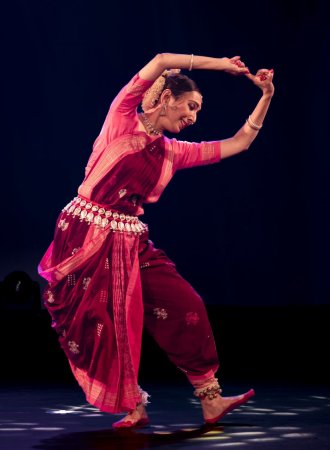 Sharmila Mukerjee 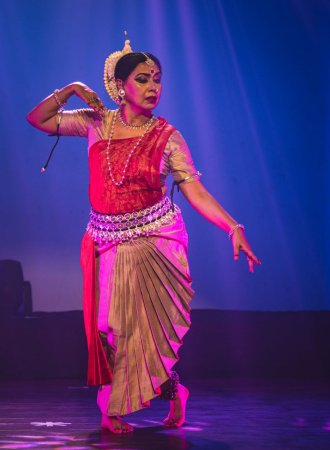 Aruna Mohanty The presentation by Aruna Mohanty titled 'Samsara' was a deeply philosophical and spiritually rich performance that explored the fundamental concepts of existence and the human experience. The audience is taken on a profound journey through the cycle of birth and death. The performance delves into the transient and impermanent nature of life, highlighting the various attachments and distractions that bind individuals and prevent them from realizing their true nature. By portraying the stages of childhood, youth, and old age, 'Samsara' emphasizes the inevitability of change and the importance of accepting the natural progression of life. The concept of the self, represented by the ego and the notion of "I, me, and mine," appears to be a central theme, suggesting that attachment to material desires and ambitions can obstruct the pursuit of spiritual knowledge and enlightenment. The performance culminated in the realization that true liberation from the cycle of Samsara can only be achieved through spiritual practice and devotion, as encapsulated in the chant "Bhaja Govindam Bhaja Govindam Bhaja Muddhamate". Aruna Mohanty's each movement served a purpose, whether advancing the narrative, expressing an emotion, or simply delighting the senses with its beauty. The ashtapadi that followed, "Ramate Yamuna pulina bane" portrayed the intense longing and jealousy experienced by Radha, the beloved of Lord Krishna. The imagery used in the verses vividly captured the emotions and sensations felt by Radha as she imagines Krishna's dalliance with another woman. Krishna's actions, such as painting musk on another woman's face and adorning her with flowers, serve as painful reminders to Radha of his absence and apparent infidelity. Radha's inner turmoil is palpable as she questions why she continues to wait for Krishna while he indulges in romantic encounters elsewhere. The description of her adorned hips and feet, as well as Krishna's gesture of placing her feet close to his heart, symbolizes the deep connection between Radha and Krishna despite the perceived betrayal. The choreography by Aruna Mohanty and the music composition by Dr Subas Pani enhanced the emotional depth of the ashtapadi, capturing the essence of Radha's longing and Krishna's allure through expressive dance movements and evocative melodies. The concluding piece by Aruna Mohanty titled 'Aswathama' narrated the tragic tale of Aswathama, son of Dronacharya, who despite his valour and expertise in warfare, faced societal constraints due to his Brahmin birth. Given the chance to lead the Kaurava forces, he entered the Pandava camp and mistakenly slaughtered their five sons in a fit of rage. Condemned by Lord Krishna for his immoral actions, Aswathama was cursed to live an immortal life burdened by his wounds and suffering. The choreography by Aruna Mohanty, along with the music composition by Guru Ramhari Das and rhythmic elements by Guru Dhaneswar Swain, beautifully captured the essence of Aswathama's tragic journey and the consequences of his reckless deeds. The thoughtful integration of abhinaya and nritta ensured that her performance was not only visually stunning but also intellectually and emotionally engaging. Aruna Mohanty's performances, particularly her rendition of 'Aswathama' left a profound impact on the viewers, eliciting a deep sense of respect and admiration for the artiste and her artistry. 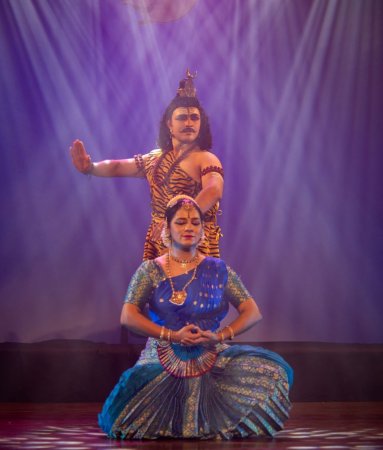 Anuradha Vikranth The festival concluded with 'Aikyam' a dance production presented by Anuradha Vikranth and the Drishti Dance Ensemble. The performance explored the amalgamation of Satyam (eternal truth), Shivam (auspiciousness), and Sundaram (beauty) as guiding principles for spiritual fulfilment in the universe. The concept of Satyam represents the eternal truth that Prakruthi (nature) and Parameshwara (the supreme being) are formidable. Shivam symbolizes the powerful and auspicious combination of Shiva and Shakti, which protects and leads to the progress of mankind. Sundaram signifies the belief that all creations in the universe are beautiful and belong to a single family. 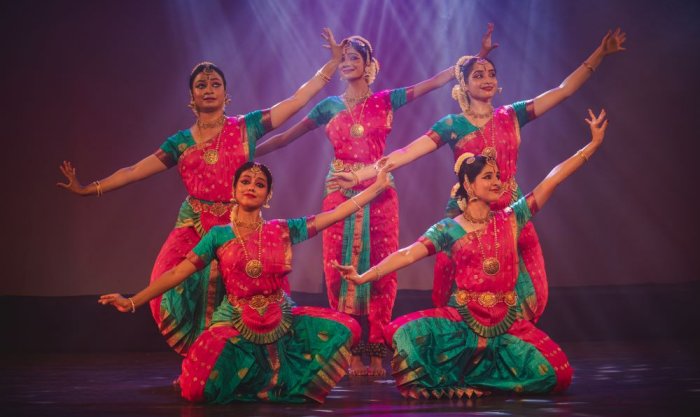 Drishti ensemble The guidance for the production was provided by Shatavadhani Dr R Ganesh, while the music was composed by Praveen D Rao. The choreography was skillfully crafted by Anuradha Vikranth, a dancer known for her creativity, versatility, and grace. The Drishti Dance Ensemble, included Nidhaga Karunad, P. Tincy Monnappa, Aishwarya Tholpady, Shamita K, Anagha Jain, Kavyashree Bharadwaj, Chandralekha C, and Akriti Madhav. Anuradha Vikranth and her group are renowned for captivating audiences with their skilful execution and artistic expression. With a keen eye for detail and a deep understanding of the dance form, they brought precision and finesse to their performance. The presentations were elevated by the addition of lighting effects, skillfully executed by Manju Madikeri (Sharmila Mukerjee and Anuradha Vikranth) and Janardhan Raj Urs (Aruna Mohanty). 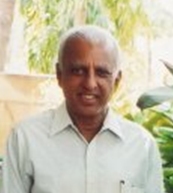 Bangalore based Satish Suri is an avid dance rasika besides being a life member of the Music and Arts Society. |